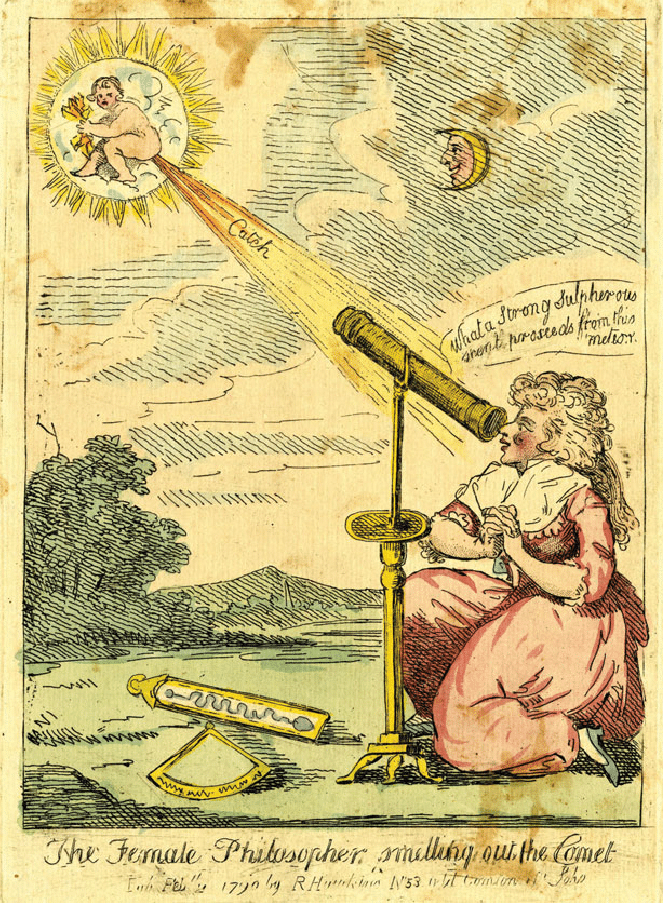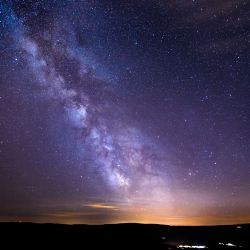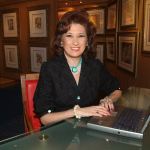"Star so bright in the night,” do we know your name?
Many of the starry creatures glittering among the constellations above were identified almost 300 years ago by a woman whose birthday we celebrate on March 16. Her name, which is not nearly as well known as the comets she catalogued, is Caroline Herschel.
March 16 is the 274th birthday of Caroline Lucretia Herschel, one of 32 women with craters on the moon named for them. (There are 1,578 named and cataloged lunar craters, affording women less than 2% of that bounty). For Herschel, the first professional (i.e., paid) female astronomer who discovered eight comets and various nebulae and galaxies in her lifetime, this is a fitting tribute, indeed.
Encouraged by her brother William, who discovered the planet Uranus, Herschel was also the first woman in England to hold a government position. [1] In 1828, she received the Gold Medal of the (British) Royal Astronomical Society, the first woman to be afforded that honor. It took 168 years for another woman to join those ranks when, in 1996, Vera Rubin received the medal for her work on galaxy rotation rates. [2] In 1835, she was elected an Honorary Member of the Royal Astronomical Society, an honor she shared with the Scottish scientist, mathematician, and science-writer, Mary Somerville.
In the Beginning, there was the Heaven….
Herschel’s life began with hardship. Born in 1750, by age ten, she suffered typhus, which stunted her growth to 4 feet 3 inches, affected her eyesight, and curtailed Caroline’s formal education. No beauty she, her mother made plain she did not expect her daughter to marry and insisted Caroline train as a house- servant, although her father taught her in secret. Following his death, Caroline’s older brothers took stewardship of their gifted sister, first inviting them to join their musical activities (she became proficient at playing the oboe and singing – even performing) and then joining William’s scientific pursuits. But first, before her scientific prowess was recognized and while William ground lenses for his bespoke telescopes, she kept house for him.
“I did what a well-trained puppy dog would have done, that is to say, […] what he commanded…” - Caroline Herschel
Shattering the Celestial Ceiling
Caroline’s affiliation with her brother brought her in contact with the scientific luminaries of the day. Their home also functioned as a scientific salon, allowing men and women of science to socialize and network.
 In December 1788, the astronomer royal, Dr. Nevil Maskelyne, congratulated Herschel on being the "’ first woman in the history of the world’ to discover not one, but two new comets. No woman since renowned Greek mathematician Hypatia of Alexandria had had such an impact on the sciences. Her celebrity would, as the director of the Paris Observatory, Pierre Méchain, noted, ‘shine down through the ages’".
In December 1788, the astronomer royal, Dr. Nevil Maskelyne, congratulated Herschel on being the "’ first woman in the history of the world’ to discover not one, but two new comets. No woman since renowned Greek mathematician Hypatia of Alexandria had had such an impact on the sciences. Her celebrity would, as the director of the Paris Observatory, Pierre Méchain, noted, ‘shine down through the ages’".
This tribute was undoubtedly in recognition of her 1786 paper entitled An Account Of A New Comet, “the first scientific research programme”[sic] conducted by a woman published in Philosophical Transactions, the journal of the Royal Society. Later, earning recognition by the Royal Irish Academy, awarded a Gold Medal for Science by the King of Prussia, and nominated to the French Academy of Sciences.
Herschel's pioneering work extended beyond discovering celestial bodies; she also made significant contributions to the field of celestial cataloging and classification. Her meticulous records and detailed observations laid the groundwork for subsequent generations of astronomers, providing invaluable insights into the nature and composition of celestial bodies.
In addition to her scientific endeavors, Caroline Herschel cratered societal norms and paved the way for future generations of women scientists. However, while she may have been among the first officially recognized astronomers to garner widespread professional recognition during her lifetime, she was far from the first female astronomer. Nor was the subject of astronomy neglected in women’s education of the day, largely due to her prominence and accomplishments. An excerpt from Ladies Astronomy, a text written expressly for women by Caroline’s friend, mathematician Joseph Lalande, is telling:
“We have, already, many instances of females, who have evinced a laudable spirit of inquiry, and great perseverance in the pursuit of this science [amongst these:].
- The beautiful Hypatia, who was assassinated by the clergy at Alexandria, in the year 415, taught astronomy there, and composed several works.
- Maria Cunitz, the daughter of a physician of Silesia, published … astronomical tables in 1650; …
- In 1680, Joanna Dumée gave lectures on the Copernican system; …,
- The Marchioness [Emilie] du Chatelet [also a philosopher and mathematician] translated and published the works of Newton; … [1706-1749]
- Madame Lepaute, who died in 1788, calculated the ephemeris of the Academy for more than ten years;
- Madame du Piery, the first lady who taught astronomy at Paris, made several calculations of eclipses to ascertain the Moon's motion;
- … Miss Caroline Herschel, whose proficiency in the science is so well known, has discovered five comets. [she would discover eight in her lifetime]
- and my niece, Françoise de Lalande, assists her husband in his observations, whence she draws her conclusions by calculations. She has reduced ten thousand stars, and has published three hundred pages of Horary Tables for the Navy; …, which may be found in my Abridgement of Navigation.”
The works of notable women in all fields still lie buried but are not dead. Each leaf uncovered is a testament to their contribution and efforts.
[1] The first woman to discover a comet discoverer was Maria Kirch, born seventy years earlier. Kirch’s husband, Gottfried, claimed the discovery under his name, obscuring his wife’s contribution for over a century.
[2] In 1985, scientist Carl Sagan wrote the sci-fi novel Contact about extraterrestrial life, which featured protagonist, radio-astronomer Dr. Ellie Arroway, in and of itself a far-reaching literary conception for the time.
Source: The Quiet Revolution of Caroline Herschel: The Lost Heroine of Astronomy Emily Winterburn. ISBN 978-0-7509-8067-8.

